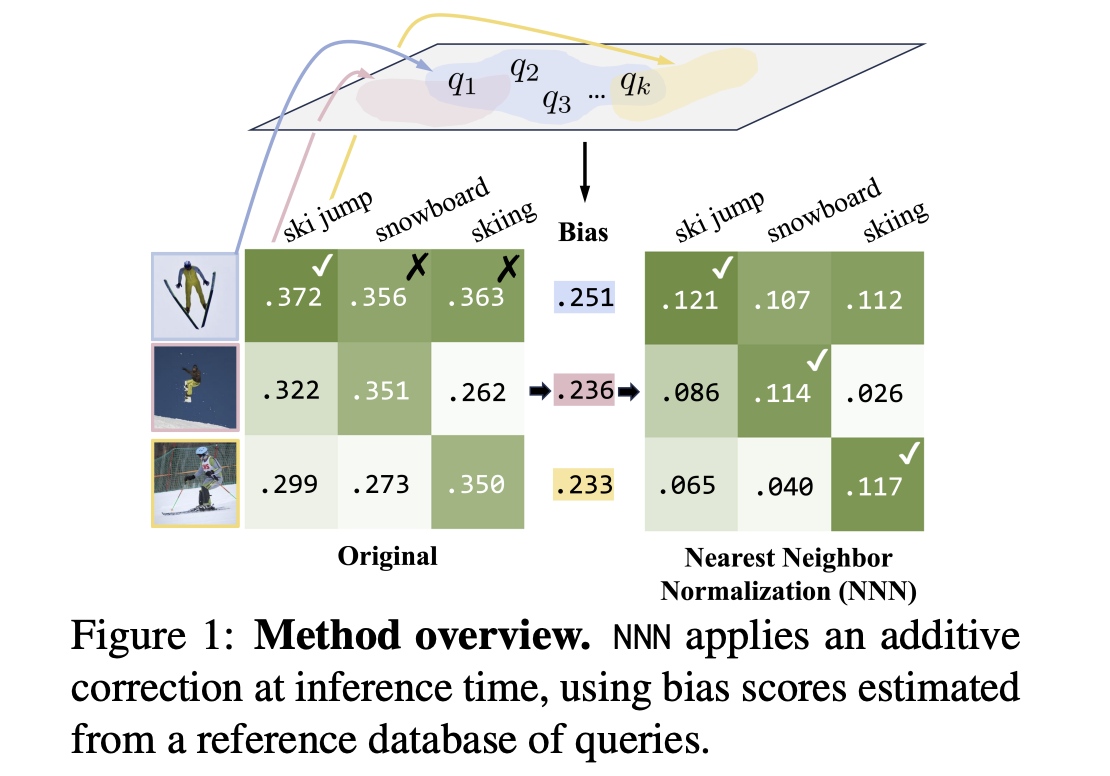
Challenges in Image and Text Retrieval
Contrastive image and text models are essential for effective text-to-image and image-to-text retrieval. However, they face challenges in optimizing retrieval accuracy. These models learn to align matching text-image pairs but mainly focus on pretraining goals rather than improving actual retrieval performance. This limitation leads to ineffective embeddings for real-world tasks.
Key Problems:
- Hubness Problem: Certain retrieval candidates dominate multiple queries, leading to incorrect matches.
- Resource Intensive: Current solutions often require significant computational power and extensive training, making them impractical for limited-resource environments.
Introducing Nearest Neighbor Normalization (NNN)
Researchers from MIT and Stanford have developed Nearest Neighbor Normalization (NNN), a training-free solution to enhance contrastive retrieval performance. NNN is efficient and operates with sublinear time complexity, making it suitable for various applications.
How NNN Works:
- Correction Mechanism: NNN normalizes retrieval scores using the k nearest query embeddings from a reference dataset, improving accuracy.
- Reduced Inference Overhead: The method maintains minimal computational requirements while outperforming existing techniques.
Addressing the Hubness Problem
NNN effectively tackles the hubness problem in retrieval systems by calculating a match score based on cosine similarity. It includes a bias correction mechanism to ensure fair retrieval outcomes.
Bias Correction Process:
- Each retrieval candidate’s bias is computed and subtracted from the original score, resulting in a more accurate match.
- This process is efficient, allowing bias scores to be cached and computed offline.
Performance and Versatility of NNN
NNN has shown impressive results across various models like CLIP, BLIP, and others, significantly improving retrieval accuracy with minimal computational resources.
Results:
- Improved average precision in retrieval tasks.
- Significant reduction in gender bias in image retrieval.
Practical Solutions with NNN
Nearest Neighbor Normalization is a major advancement in multimodal retrieval systems. Its innovative bias correction approach enhances accuracy while being efficient and versatile.
Explore Further:
- Check out the Paper and GitHub for more details.
- Follow us on Twitter, join our Telegram Channel, and be part of our LinkedIn Group.
- Subscribe to our newsletter and join our 55k+ ML SubReddit.
Unlock AI Potential for Your Business
Stay competitive and leverage Nearest Neighbor Normalization to transform your operations with AI.
Steps to Implement AI:
- Identify Automation Opportunities: Find key areas for AI integration.
- Define KPIs: Measure the impact of AI on your business.
- Select an AI Solution: Choose tools that fit your needs.
- Implement Gradually: Start small, gather data, and expand wisely.
Contact Us:
For AI KPI management advice, reach out at hello@itinai.com. For insights, follow us on Telegram or Twitter.
Discover how AI can enhance your sales processes and customer engagement. Explore solutions at itinai.com.


























